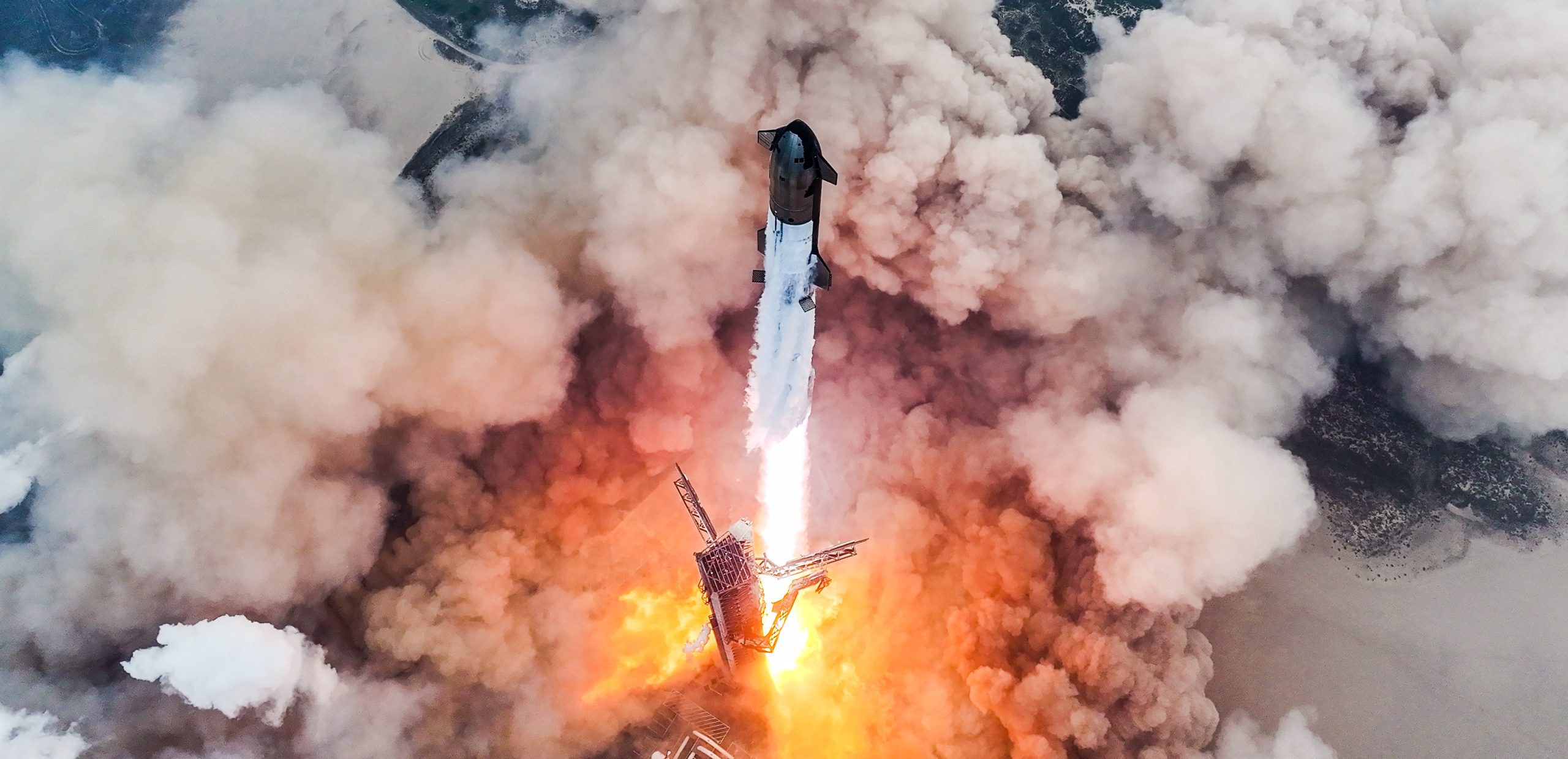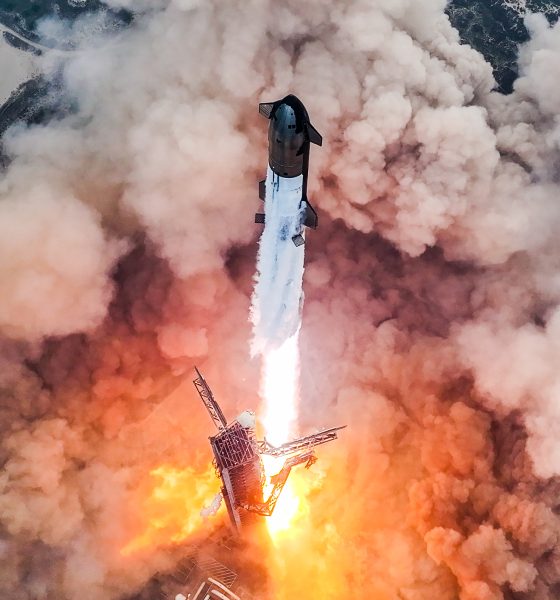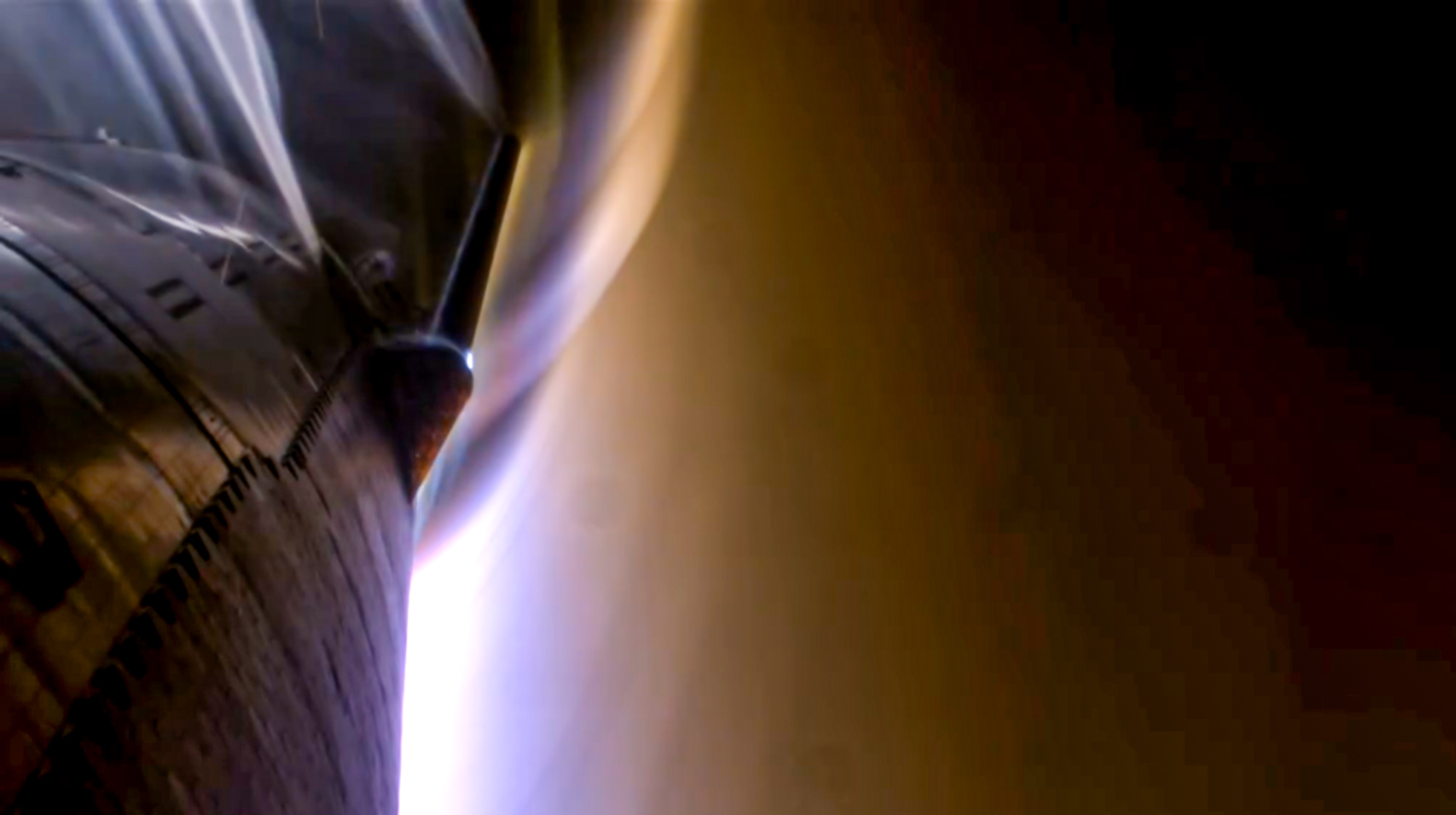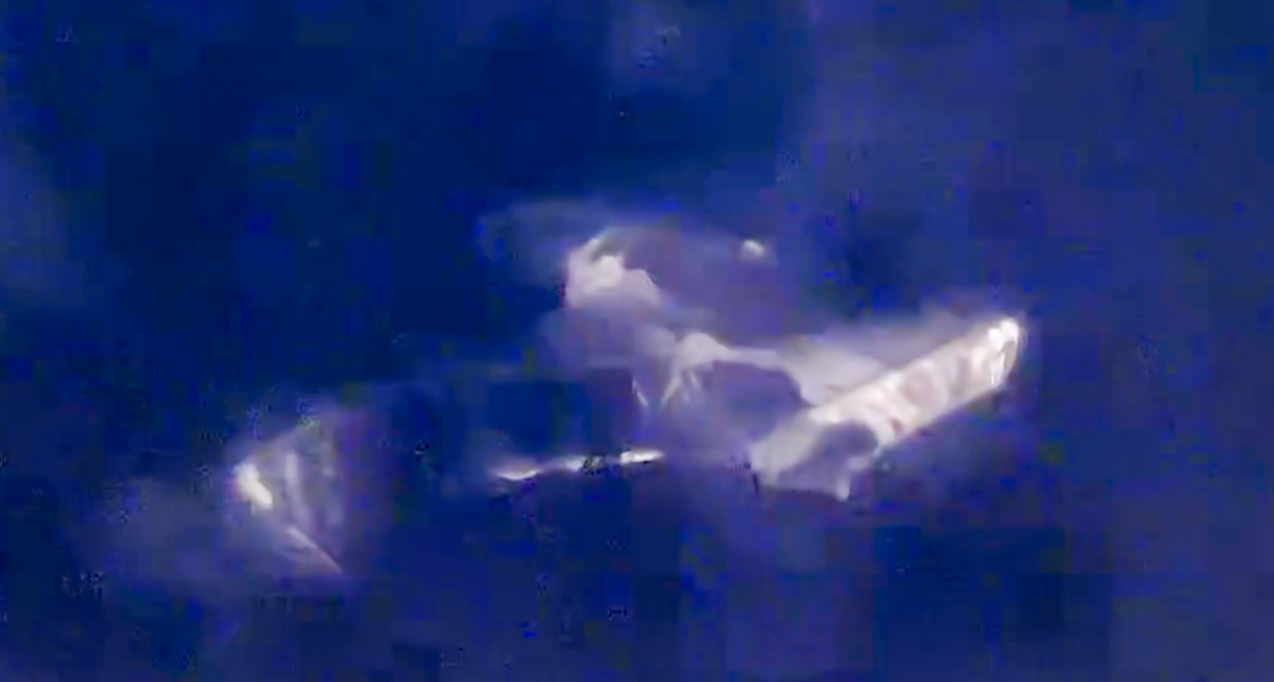

News
SpaceX aces fourth Starship flight test
SpaceX successfully launched and landed its Super Heavy booster and Starship on its fourth integrated flight test, with each making a soft splashdown in the water.
Starship took to the skies at 7:50 am CT from a foggy Starbase, Texas, in an effort to surpass previous flight milestones.
Liftoff of Starship! pic.twitter.com/2Z1PdNPYPG
— SpaceX (@SpaceX) June 6, 2024
As the countdown hit zero, 32 of 33 Raptor engines on the Super Heavy booster lit, with the outlier being an engine on the outer ring. Despite the engine out, the booster still ascended with ease away from the launch mount and broke through the thick fog into clear blue skies with views streamed back to the ground from just above one of the grid fins.
As Starship climbed, everything continued to operate nominally all the way through the hot staging which saw Super Heavy Booster 11 shut down all but its 3 center Raptor engines as Starship 29 lit its 6 Raptor engines to pull away from the massive booster. As soon as Starship was clear, Booster 11 completed a flip and boostback burn to begin its trip for a planned soft touchdown in the Gulf of Mexico by relighting 10 Raptor engines.
Once the boostback burn was complete, the hot staging ring was ejected to reduce the overall mass of the booster to help it survive reentry and landing. Future Super Heavy boosters will feature a lighter hot staging ring that will not be ejected. As the booster made its way back, it re-orientated to vertical and began re-entry back through the atmosphere, and unlike the Falcon 9, it does not perform an entry burn.
Hot stage jettison pic.twitter.com/J48QtQD1Ae
— SpaceX (@SpaceX) June 6, 2024
At around 7 minutes and 15 seconds into flight, the Super Heavy booster lit 12 out of a planned 13 engines for its landing burn, followed shortly by quite a bit of debris flying by the onboard camera, but it did not affect anything critical as seconds later Booster 11 made a successful splashdown in the Gulf of Mexico before a slow planned tip over into the water.
Super Heavy has splashed down in the Gulf of Mexico pic.twitter.com/hIY3Gkq57k
— SpaceX (@SpaceX) June 6, 2024
As Booster 11 completed the first successful soft landing, Starship 29 fired its six Raptor engines, three sea level and three vacuum, with engine shutoff coming in at eight and a half minutes into flight. The starship then entered a long coast phase as it passed between the Florida Keys and Cuba and transited over the Atlantic Ocean, followed by Africa.
During IFT-3, live views were provided for a majority of this portion but due to an unknown issue, cameras didn’t come back until just before 37 minutes into the flight. Elon Musk posted on X that they had a data signal the entire time including live views from internal cameras.
45 minutes into the flight, the true test of Starship began as plasma started to build up, but this time, Starship was in the correct orientation, and the heatshield was facing the correct way to give the ship its best chance at survival.
As Starship descended, plasma build-up increased with callouts from mission control noting rising temperatures on the nose but all within acceptable limits. At just over 54 minutes into the flight, Starship made it further than the third flight test and into unknown territory.
Plasma builds up as Starship re-enters the atmosphere (Credit SpaceX)
57 minutes into the flight, peak heating had passed but tiles were starting to fall away from the forward flap followed by melting of the lower portion, despite this damage, Starship held strong and in the correct orientation as it descended.
Starship continued its descent and, with significant damage, still made it through to its own landing burn and performed its flip to a vertical orientation and a soft touchdown in the Indian Ocean west of Australia.
Damage to the forward flap as seen during the landing burn (Credit SpaceX)
Even with the damage inflicted on Starship, it completed all test objectives while providing SpaceX with incredibly valuable data that will be used to make the ship stronger on future test flights. The Starlink antenna also survived the entire flight which ensured this data made it back to mission control.
With this successful mission complete, SpaceX could launch the 5th flight by mid to late July and possibly even attempt a catch of the Super Heavy booster according to Elon Musk.
Catch a replay of this epic mission below!
Watch Starship’s fourth flight test → https://t.co/bJFjLCiTbK https://t.co/SjpjscHoUB
— SpaceX (@SpaceX) June 6, 2024
How do you think this flight went overall, and will the fifth flight take place by August?
Questions or comments? Shoot me an email at rangle@teslarati.com, or Tweet me @RDAnglePhoto.

Elon Musk
Elon Musk just said some crazy stuff about the Tesla Roadster

Elon Musk appeared on the Moonshots podcast with Peter Diamandis today to discuss AGI, U.S. vs. China, Tesla, and some other interesting topics, but there was some discussion about the upcoming unveiling of the Roadster, the company’s electric supercar that will arrive several years after it was initially slated for release.
Musk made some pretty amazing claims about the Roadster; we already know it is supposed to be lightning-fast and could even hover, if Tesla gets everything to happen the way it wants to. However, the car has some pretty crazy capabilities, some of which have not even been revealed.
On the podcast, Musk said:
“This is not a…safety is not the main goal. If you buy a Ferrari, safety is not the number one goal. I say, if safety is your number one goal, do not buy the Roadster…We’ll aspire not to kill anyone in this car. It’ll be the best of the last of the human-driven cars. The best of the last.”
🚨 Elon on the Roadster unveiling, scheduled for April 1:
— TESLARATI (@Teslarati) January 6, 2026
Musk makes a good point: people who buy expensive sports cars with ridiculous top speeds and acceleration rates do not buy them to be safe. They hope they are safe in case of an emergency or crash, but safety is not at the forefront of their thoughts, because nobody buys a car thinking they’ll crash it.
The Roadster is truly going to push the limits and capabilities of passenger vehicles; there’s no doubt about that. Tesla plans to show off the new version car for the first time on April 1, and Musk has only hinted at what is possible with it.
Musk said back in November:
“Whether it’s good or bad, it will be unforgettable. My friend Peter Thiel once reflected that the future was supposed to have flying cars, but we don’t have flying cars. I think if Peter wants a flying car, he should be able to buy one…I think it has a shot at being the most memorable product unveiling ever. [It will be unveiled] hopefully before the end of the year. You know, we need to make sure that it works. This is some crazy technology in this car. Let’s just put it this way: if you took all the James Bond cars and combined them, it’s crazier than that.”
Production is set to begin between 12 and 18 months after the unveiling, which would put the car out sometime in 2027. Hopefully, Tesla is able to stay on track with the scheduling of the Roadster; many people have been waiting a long time for it.
News
Tesla launches hiring for Robotaxi program in its twentieth country
Overall, the hiring signals Tesla’s aggressive timeline for global dominance in autonomous mobility.

Tesla has launched a hiring initiative for its Robotaxi program in its twentieth country, as the company posted two new jobs in Thailand this week.
Tesla is hiring in Bangkok and Kowloon for the Vehicle Operator position, which is related to data collection, and is the first in Thailand, but the twentieth country overall, as the company tries to expand into other markets.
🚨 BREAKING: Tesla is hiring additional full-time Vehicle Operators in Bangkok, Thailand.
Previous openings were 6-month, part-time roles. These are equivalent to AI Safety Operator roles in the U.S. pic.twitter.com/R6LzoU1bos— Tesla Yoda (@teslayoda) January 5, 2026
Tesla has had active job postings for Vehicle Operator positions in the United States, India, Israel, Taiwan, Germany, the Czech Republic, Hungary, the UK, Finland, Switzerland, Sweden, the Netherlands, Austria, Spain, Norway, Italy, and Turkey in past listings.
These postings are not all currently available, likely because the roles have been filled.
Thailand is the most recent, and broadens the company’s potential path to expanding its ride-hailing program, which is only active in the United States in Austin, Texas, and the California Bay Area, so far.
These roles typically involve data collection, which assists in improving Autopilot and Full Self-Driving operation. Tesla’s self-driving programs utilize real-world data that is accumulated and stored, observing vehicle and traffic behavior, as well as tendencies that are performed by human drivers to help increase safety and overall performance.
Overall, the hiring signals Tesla’s aggressive timeline for global dominance in autonomous mobility. Although the company has several high-profile rivals and competitors in the field, it has established itself as a main player and a leader in the development of autonomous technology, especially in the U.S., as its FSD suite is refined on almost a weekly basis.
The Full Self-Driving suite is available in seven countries and territories currently, including the U.S., Canada, China, Mexico, Puerto Rico, Australia, and New Zealand. Its biggest goal for expansion is currently the European market, where regulatory hurdles have been the main bottleneck prolonging its launch on the continent.
Tesla has performed months of testing in various European countries, including France and Spain, and does have support in some areas from various regulatory agencies. However, the company is hoping to get through this red tape and offer its suite in Europe for the first time, hopefully this year.
News
Tesla China rolls out Model Y upgrades, launches low-interest financing
These strategies are aimed at improving the ownership experience and keeping vehicle pricing competitive in the world’s largest electric vehicle market.

Tesla has rolled out minor updates to the five-seat Model Y in China, upgrading the vehicle’s center display to a higher-resolution 16-inch 2K screen. The electric vehicle maker also introduced attractive financing options, including 7-year low-interest rates, to offset the new purchase tax on EVs.
These strategies are aimed at improving the ownership experience and keeping vehicle pricing competitive in the world’s largest electric vehicle market.
Five-seat Model Y gets larger, better display
With its recent update, all three variants of the five-seat Model Y now feature an upgraded 16-inch 2K resolution center display, which replaces the vehicle’s previous 15.4-inch 1080p panel. This screen was already used in the six-seat Model Y L, and it offered improved visual clarity. Tesla China has also updated the Model Y’s headliner to black, giving the vehicle a sleeker appearance.
Prices of the five-seat Model Y remain unchanged at RMB 263,500, RMB 288,500, and RMB 313,500 for the respective trims. This update enhances the cabin experience as domestic rivals are already adopting high-resolution screens. As noted in a CNEV Post report, some domestic automakers have begun rolling out vehicles equipped with 3K-resolution displays.
New financing offers
Tesla also launched ultra-long-term financing offers for its locally produced models in China, which include the Model 3 sedan, the five-seat Model Y, and the six-seat Model Y L, through January 31, 2026. The 7-year option features an annualized fee rate as low as 0.5%, which is equivalent to 0.98% interest. This is expected to save customers up to RMB 33,479 ($4,790) compared to standard rates.
A 5-year zero-interest plan is also available, and it has been extended to the Tesla Model Y L for the first time. These incentives help offset China’s new 5% purchase tax on New Energy Vehicles (NEVs) in 2026-2027. Some of Tesla’s rivals in China have announced in recent months that they would be covering the purchase tax owed by buyers early this year.








